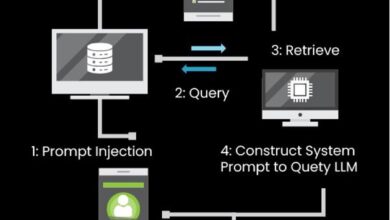In our current global landscape, the reality is that anyone could be the next victim of a cyberattack. While physical safety has always been a top priority, it is increasingly clear that online security needs to be prioritised too. Individuals and organisations around the world must determine the best ways to stay secure online during tumultuous times, both now and in the future. It is especially important that those who are most vulnerable can mitigate the potential of becoming victims of a cyberattack.
Protecting those at risk
Activists, political candidates, journalists, and those within marginalised communities, are just some of the individuals disproportionately targeted by cyberattacks. Higher-profile targets, such as political candidates and activist groups, face attacks aimed at obstructing their human rights and freedom of speech. For their safety and wellbeing, it is vital for high-risk and vulnerable individuals to have access to effective cybersecurity to prevent their most sensitive information from being extorted, stolen, or leaked.
These same practices must also apply to regular individuals going about their day-to-day lives, as bad actors do not limit their targets. Indeed, at a business level, everyone from an intern to the CEO is equally at risk. This is because all the attackers need to carry out their assault is entry to the system, which can come from someone at any level.
Passwords are no longer up to the task
The conventional security method of a password and username in addition to basic two-factor authentication (2FA), such as mobile authentication apps or one-time passcodes (OTPs), cannot protect against today’s most common cyber threats. Although better than no security at all, these basic methods are susceptible to SIM swapping, account takeovers, phishing scams, and man in the middle (MiTM) attacks.
Furthermore, passwords are not user friendly. Keeping track of old and new passwords can be difficult, which is why it can be so tempting to recycle generic yet memorable passwords over various accounts. However, this is strongly discouraged given how easily passwords can be hacked. Instead, for those keen on using passwords, consider following recommended best practices such as creating stronger passwords and storing them within a password manager app, and frequently resetting passwords to ensure a higher level of security.
Legitimate web browser extensions are useful for helping users manage their passwords, blocking ads, monitoring online sales, and much more. This is because these companies can remotely and securely fix any issues with the browser extension. For example, Mozilla regularly subjects its extensions to automatic status checks and manual code reviews. However, these platforms can also be subject to digital threats. To stay safe, it is always best to limit the amount of web extensions used and delete any that aren’t regularly used. The fewer third-party sources with access to your data, the better.
Robust multi-factor authentication (MFA) must take centre stage
The first step in staying secure is to protect the private and professional data of any user against common cyberattacks while also safeguarding their online identities. Therefore, instead of passwords, more robust forms of MFA that require users to provide at least two or more forms of verified identification should be used, such as hardware security keys. These devices are proven to serve as a strong first-line of cyber protection by defending against today’s most common online threats.
Hardware security keys can be easily activated by a simple finger tap or a biometric identifier – like a fingerprint – to access various online accounts and digital applications. These devices are portable and can function offline to enable secure authentication from anywhere. In raising the standards of cybersecurity this way, users can feel safe knowing that their most sensitive data is secured with the most advanced protection.
General best practices to follow
Phishing scams are one of the most widespread cyber threats faced today. Therefore, it is important to look out for the tell-tale signs of a malicious email. Is the email address familiar? Are there any grammatical errors or misspelled words? Do the links or email attachments make sense?
To identify malicious websites and links, checking for HTTPS security can help indicate if the selected web page is secure and trusted. This should be done before entering any ID credentials or other sensitive details. The HTTPS is always listed in the URL and search bar, which will also display a small lock stating that it is secure. Asking these questions and looking out for indications of malicious emails will help users become better equipped in identifying phishing emails and potential cyber threats.
Lastly, it is always important to keep up with major cyber threats, data breaches, and general news events as they happen in real-time. Staying abreast of current events can help online users make informed and educated decisions for themselves. Users will also be able to keep up to date on the newest or best recommended security tools available to them.
Advanced security tools will contribute to digital, physical, and national safety when used correctly. Alternative methods of cybersecurity can appear difficult to navigate, especially for those who may be solely accustomed to the use of passwords and usernames. However, many of these tools, such as hardware security keys, are much more user friendly than inputting passwords and codes. They also greatly reduce the risks of common cyber threats by securing users not with what they know – but with something unique that they have – which can never be taken away.




